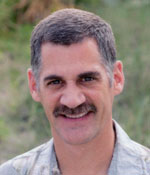
After briefing the student’s first night formation sortie in a T-38, I thought he might have been a little nervous but wasn’t quite sure. He was an average to above-average student with no major flying problems, and as was discussed in the mission brief, all the maneuvers we would be flying that night were the same ones he had flown before. The only difference would be we were flying in the dark.
 We were the wingman of a two-ship formation and would be doing a formation takeoff. This meant releasing brakes, rolling, and lifting off alongside the flight lead, maintaining 10 feet of wingtip clearance throughout the takeoff roll. Once the gear and flaps were retracted, the student would move into fingertip position, maintaining three feet of wingtip clearance. The added excitement for the evening was that we would be entering a broken cloud deck shortly after getting airborne and would be in the clouds flying close formation for a few minutes until we broke out on top.
We were the wingman of a two-ship formation and would be doing a formation takeoff. This meant releasing brakes, rolling, and lifting off alongside the flight lead, maintaining 10 feet of wingtip clearance throughout the takeoff roll. Once the gear and flaps were retracted, the student would move into fingertip position, maintaining three feet of wingtip clearance. The added excitement for the evening was that we would be entering a broken cloud deck shortly after getting airborne and would be in the clouds flying close formation for a few minutes until we broke out on top.
Our engine runup, brake release, afterburner lights, and acceleration down the runway were all normal. The other normal thing I noticed was the slightly increased breathing rate of my student. At this stage of training, this was still common even during a daytime formation takeoff. After gear and flap retraction we settled into close formation and entered the clouds, but my inner ear said something wasn’t quite right. It felt like we were flying sideways. I took a quick glance at my attitude indicator but it didn’t show anything unusual. Then another quick glance to make sure the engines were fine, and they both were. My third glance was at the turn and slip indicator. I was quite surprised to see over a half-scale deflection of the ball! The student was doing a magnificent job of flying close formation, at night and in the weather, while cross-controlling the jet in a slip.
I told him to get his right foot off the rudder but the only response was the same increased breathing that had started at brake release. I changed my wording and told him to put his feet on the floor but he still didn’t respond. Finally, I shouted his name, put my feet on the rudder pedals and chattered them slightly, then told him again to get his feet off the rudders. He finally responded. The longitudinal axis of our jet became parallel with our flight lead, and magically the student’s breathing rate went back to normal.
It is really amazing what the human mind can do under stress. Sometimes it can process huge amounts of information, and other times stress shuts the brain down to a frozen state of tunnel vision and thought. The student was a little embarrassed that he had no clue that he had applied full right rudder after gear and flap retraction. Once I snapped him out of his trance, the rest of the flight was just fine. Most pilots are usually aware of increased stress and task saturation in the cockpit. We may not be aware of all the things we are actually doing (or not doing) while under stress. When under stress in the airplane, a good starting point is to relax your breathing rate, and then wiggle your fingers and toes. This may be all you need to unfreeze your brain so that you can better evaluate what is going on around you.
Larry Brown of Colorado Springs, Colo., is a retired Air Force F-15 pilot who is using the lessons he learned as a fighter pilot as a GA pilot in his Cessna P210. Brown, who has 2,600 hours total time during his 32 years of flying, also was an instructor pilot and flight examiner in the Air Force T-38 and instructor pilot in the T-52, the military’s version of GA’s Diamond DA40. See previous installments in the Fly like a fighter archive.



